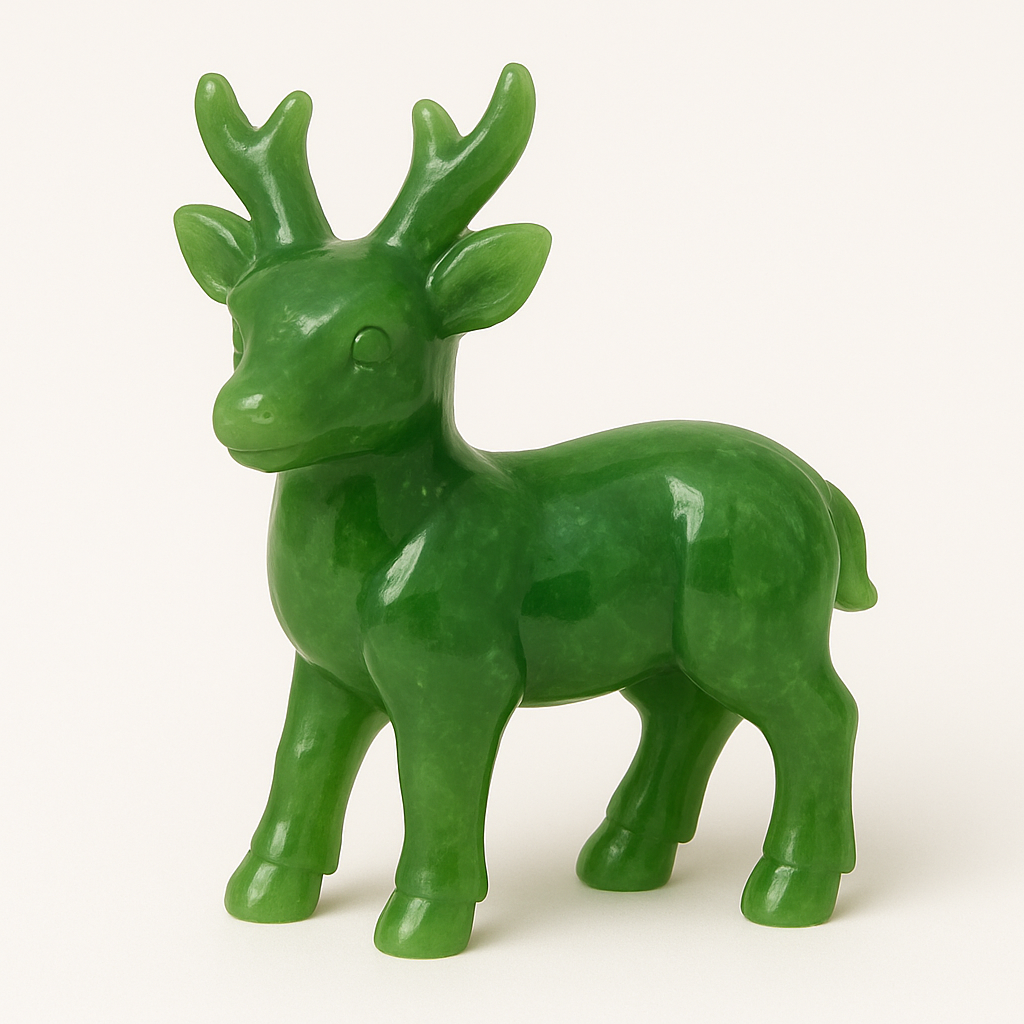
The Symbolism of Deer
Share
In the hush of the forest where sound becomes breath, and the light filters softly through the canopy, the deer appears—not as a conqueror, nor as a symbol of conquest, but as a being who walks the world with grace born of stillness. Its movements are careful, precise—not from fear, but from deep attunement to the present. The deer does not push against the current of life. It flows within it, embodying a natural wisdom that does not speak, but is felt.
To contemplate the deer is to step into the vibration of gentleness as power, receptivity as wisdom, and a kind of strength that has no need to assert itself.
The Gentle Witness in the World’s Myth
Throughout the memory of civilizations, the deer appears quietly—yet profoundly—as a messenger, a guide, and a symbol of the sacred heart awakened.
In Celtic lore, the deer often leads the seeker through the veil, into the otherworld. It appears at the edges of vision, then vanishes—pulling the soul toward what cannot be seen, but must be trusted. It is not a test, but an invitation to follow love into mystery.
In Buddhist tradition, the deer is present at the turning of the wheel of Dharma—the first teaching of the Buddha—marking the moment when compassion took the form of language. Thus, the deer becomes a symbol of truth spoken gently, of wisdom that arises not through force, but through the stillness of understanding.
Among many Indigenous cultures, the deer is known as the embodiment of unconditional love—a totem of kindness, peace, and open-hearted connection to the natural world. It teaches that no armor is required when the heart is strong.
The Way of Presence
The deer’s way is not to fight, but to feel. It knows before it moves. It listens before it reacts. Its sensitivity is not weakness—it is a refined attunement to subtle shifts in energy, environment, and intention.
It lives in a world where survival depends not on aggression, but on awareness without tension. Its body is made for stillness and for flight, and yet even in motion, it carries a kind of silence. It does not disturb what it moves through. It becomes part of it.
The stag, with its antlers like branches reaching skyward, stands as a sacred image of nobility without dominance. Its power is symbolic, not imposed. It watches over, it protects, but only within the rhythm of the natural order. Nothing in the deer’s world is forced.
Its gentleness is deliberate. Its grace is a form of knowing.
Resonance with the Energy Centers
The deer radiates the energy of the green-ray center, the heart chakra—the seat of compassion, peace, emotional balance, and open, unconditional love. Everything in its being, from its behavior to its symbolic presence, speaks the language of the heart—not through words, but through frequency.
It meets life without resistance, offering calm in the face of fear, softness in the presence of threat, and stillness in motion. The deer’s gift is not just its beauty, but its energetic invitation: to dwell in the heart, to move through the world without closing, and to love without seeking control.
In its eyes, there is no judgment. In its step, no urgency. In its life, no need to become what it is not. It reminds the mind/body/spirit complex that true strength lies in openness, and that the heart, when unguarded, becomes a force both healing and eternal.
The Quiet Power of the Heart
To walk with the deer is to walk the middle path—not of compromise, but of harmony. It teaches that love is not something to be earned, but something to be remembered. That peace is not found in still places, but carried into them.
The deer is not the path of the warrior. It is the path of the healer, the guide, the silent companion who shows the way not through direction, but through being.
Its lesson is simple, but not easy:
Keep the heart open, even here.
The deer does not resist life.
It allows life to come close.